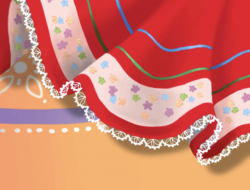Nowadays new music genres pop up as frequently as Sarah Palin changed her clothes ON the campaign trail. (Gotta keep those pants suits crisp for charity, eh?) Out with the old, in with the new, goes the tired adage, and many music aficionados have no qualms with relegating “antiquated” genres to the dustbin of history. But, in doing so, they forget that music, like wine and guitars, only gets better with age. In this spirit I’ve decided to dedicate Ear Candy’s inaugural column to the genre that predated and inspired American and British rock & roll—the blues.
Blues is largely a genre of covers. Robert Johnson wrote “Crossroads,” which Eric Clapton’s band Cream later popularized. The Gershwins penned “Summertime,” but Janis Joplin blues-ified it into a grainy, sultry late-‘60s hit. Fans and critics often deride cover bands as unworthy of serious consideration; however, the culture of covering other artists’ work points to a fundamental characteristic of the blues: ultimately, the licks and riffs blues musicians use to express their feelings matter much more than the originality of the chord progression, melody, or lyrics.
This priority given to instrumental expression over composition results from the need blues originally satisfied: namely, for African Americans in the Mississippi Delta during the 1920s and 1930s to express the sorrow of living lives racked with poverty and discrimination. With the exception of masters like Johnson, the important thing was to use your guitar (often crafted from strips of tire rubber and a wooden crate) to express your problems through adapted folk and gospel tunes—not to pen a new song.
This culture of covers continued when record companies’ appetites for the blues moved the music to Chicago. With the move came the adoption of electric instruments and—to everyone’s amazement—a few white musicians. A skinny white Jew, guitarist Mike Bloomfield (see Super Sessions), and a skinny Brit, Eric Clapton (see Bluesbreakers), along with harmonica master John Mayall (also fair-skinned) wailed and wah-wahed their way through blues tunes with a raw passion no one thought white people had.
In the end, though, whether it’s from the Mississippi Delta or the Fillmore East in New York City, the blues possesses a potential for expressing the soul’s most visceral feelings that makes her irresistible to everyone willing to let her inside. Still giving me that hipster look of skepticism? Give John Mayall’s “Room to Move” and Cream’s “White Room” a spin and get back to me—I’ll be in my room jamming on a wooden crate.
Jam along and sell your soul, Chelsea will be waiting at chelsea.m.paige@gmail.com.




